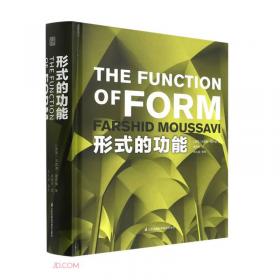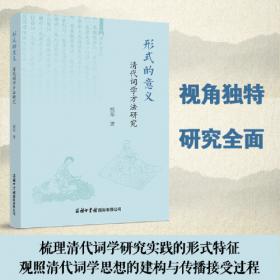形式聚焦与第二语言学习(英文版)
出版时间:
2021-01
版次:
1
ISBN:
9787569320022
装帧:
平装
开本:
16开
页数:
210页
字数:
303.000千字
正文语种:
英语
1人买过
-
本书的主要研究对象为“形式聚焦”,即在以意义为中心的课堂中采用一定的技巧和手段把学生的注意力引向语言形式。它所涉及的形式及意义的关系及语法教学问题分别是第二语言习得研究和外语教学领域的重点问题,其背后的理论基础跟认知心理学研究中的热点问题“注意”密切相关。
基于“注意假设”,本研究发现了“注意层次”对学习的影响,丰富了“形式聚焦”的理论基础。除“形式聚焦”方式外,本书还对“任务类型”对注意和学习产生的影响进行了研究,结果表明注意力不仅受到“聚焦方式”的影响,也受到具体任务要求和实施该任务的具体条件的制约。 卢燕华,广西桂林人,西安交通大学外国语学院英语教师,上海外国语大学英语语言文学博士;主要研究领域为二语习得、外语教学;博士阶段师从我国知名外语教育家戴炜栋先生;近年来,在核心期刊等刊物上发表二语习得和外语教学相关论文5篇,主编、参编教材3部,主持“中央高校基本科研业务费专项资金”1项,参与各级科研及教改项目数项;曾获校级授课竞赛一等奖、校级教学成果二等奖、“陕西高等学校大学英语教学学术研讨会”教学论文一等奖,指导学生在全国英语写作大赛中获陕西省特等奖。 Chapter 1 Introduction
1.1 Research background
1.1.1 Form and meaning within a cognitive framework
1.1.2 Form-focused and meaning-focused approach in second language pedagogy
1.1.3 Focus-on-form
1.2 Goal of research
1.3 Research questions
1.4 Research significance
1.5 Structure of the book
1.6 Summary
Chapter 2 Literature Review
2.1 Noticing and SLA
2.1.1 Noticing Hypothesis
2.1.2 Attention, awareness and noticing in SLA
2.1.3 Different types of noticing
2.2 Focus-on-form
2.2.1 Meaning-focused approach, focus-on-forms and focus-on-form
2.2.2 Definitions of FonF and different related terms
2.2.3 Theoretical explanations for FonF
2.3 Input enhancement and output stimulation
2.3.1 Input enhancement and textual enhancement
2.3.2 Output stimulation
2.4 Tasks in L2 research and pedagogy
2.4.1 Definitions of task
2.4.2 Principles for using tasks in L2 classrooms
2.4.3 Empirical studies investigating tasks
2.5 Limitations of the previous studies and justifications for thepresent study
2.6 Summary
Chapter 3 Theoretical Foundations
3.1 Information Processing model and Output Hypothesis
3.1.1 Information Processing model
3.1.2 Output in the integrated model of second language acquisition
3.2 Izumi\'s model featuring noticing in relation to overall SLA processes
3.3 The theoretical foundations for the present study
3.4 Summary
Chapter 4 Research Design
4.1 Research questions and hypotheses
4.2 Method
4.2.1 Participants
4.2.2 Linguistic target
4.2.3 Input materials used in the study
4.2.4 Instruments
4.2.5 Research design
4.3 Summary
Chapter 5 Results and Discussion
5.1 The noticing issue
5.1.1 Phase 1 underlining
5.1.2 Phase 2 underlining
5.1.3 Results from questionnaires and interviews
5.1.4 Discussion
5.2 The immediate uptake issues
5.2.1 The immediate uptake
5.2.2 The effect of task types
5.2.3 Results from questionnaires and interviews
5.2.4 Discussion
5.3 Effects of the three FonF approaches on promote learning
5.3.1 The effects of the three FonF approaches on promoting learning in Phase 1
5.3.2 The effects of the three FonF approaches on promoting learning in Phase 2
5.3.3 The retention of the effects of the three FonF approaches on promoting learning
5.3.4 The overall developmental trends of the four groups
5.3.5 Results from questionnaires and interviews
5.3.6 Discussion
5.3.7 Summary
Chapter 6 Conclusions
6.1 Major research findings
6.2 Implications for teaching
6.2.1 Practicing FonF in L2 classrooms
6.2.2 Use of textual enhancement in EFL context
6.2.3 Use of oral output in EFL context
6.3 Limitations and suggestions for future research
6.3.1 Limitations in general and suggestions for future research
6.3.2 Limitations of the research design of the experiment
6.3.3 Limitations of the TE treatment and suggestions for future research
6.3.4 Limitations of the Oral Output treatment and suggestions for future research
6.3.5 Other factors to be investigated in the future
6.4 Summary
References
Appendices
-
内容简介:
本书的主要研究对象为“形式聚焦”,即在以意义为中心的课堂中采用一定的技巧和手段把学生的注意力引向语言形式。它所涉及的形式及意义的关系及语法教学问题分别是第二语言习得研究和外语教学领域的重点问题,其背后的理论基础跟认知心理学研究中的热点问题“注意”密切相关。
基于“注意假设”,本研究发现了“注意层次”对学习的影响,丰富了“形式聚焦”的理论基础。除“形式聚焦”方式外,本书还对“任务类型”对注意和学习产生的影响进行了研究,结果表明注意力不仅受到“聚焦方式”的影响,也受到具体任务要求和实施该任务的具体条件的制约。
-
作者简介:
卢燕华,广西桂林人,西安交通大学外国语学院英语教师,上海外国语大学英语语言文学博士;主要研究领域为二语习得、外语教学;博士阶段师从我国知名外语教育家戴炜栋先生;近年来,在核心期刊等刊物上发表二语习得和外语教学相关论文5篇,主编、参编教材3部,主持“中央高校基本科研业务费专项资金”1项,参与各级科研及教改项目数项;曾获校级授课竞赛一等奖、校级教学成果二等奖、“陕西高等学校大学英语教学学术研讨会”教学论文一等奖,指导学生在全国英语写作大赛中获陕西省特等奖。
-
目录:
Chapter 1 Introduction
1.1 Research background
1.1.1 Form and meaning within a cognitive framework
1.1.2 Form-focused and meaning-focused approach in second language pedagogy
1.1.3 Focus-on-form
1.2 Goal of research
1.3 Research questions
1.4 Research significance
1.5 Structure of the book
1.6 Summary
Chapter 2 Literature Review
2.1 Noticing and SLA
2.1.1 Noticing Hypothesis
2.1.2 Attention, awareness and noticing in SLA
2.1.3 Different types of noticing
2.2 Focus-on-form
2.2.1 Meaning-focused approach, focus-on-forms and focus-on-form
2.2.2 Definitions of FonF and different related terms
2.2.3 Theoretical explanations for FonF
2.3 Input enhancement and output stimulation
2.3.1 Input enhancement and textual enhancement
2.3.2 Output stimulation
2.4 Tasks in L2 research and pedagogy
2.4.1 Definitions of task
2.4.2 Principles for using tasks in L2 classrooms
2.4.3 Empirical studies investigating tasks
2.5 Limitations of the previous studies and justifications for thepresent study
2.6 Summary
Chapter 3 Theoretical Foundations
3.1 Information Processing model and Output Hypothesis
3.1.1 Information Processing model
3.1.2 Output in the integrated model of second language acquisition
3.2 Izumi\'s model featuring noticing in relation to overall SLA processes
3.3 The theoretical foundations for the present study
3.4 Summary
Chapter 4 Research Design
4.1 Research questions and hypotheses
4.2 Method
4.2.1 Participants
4.2.2 Linguistic target
4.2.3 Input materials used in the study
4.2.4 Instruments
4.2.5 Research design
4.3 Summary
Chapter 5 Results and Discussion
5.1 The noticing issue
5.1.1 Phase 1 underlining
5.1.2 Phase 2 underlining
5.1.3 Results from questionnaires and interviews
5.1.4 Discussion
5.2 The immediate uptake issues
5.2.1 The immediate uptake
5.2.2 The effect of task types
5.2.3 Results from questionnaires and interviews
5.2.4 Discussion
5.3 Effects of the three FonF approaches on promote learning
5.3.1 The effects of the three FonF approaches on promoting learning in Phase 1
5.3.2 The effects of the three FonF approaches on promoting learning in Phase 2
5.3.3 The retention of the effects of the three FonF approaches on promoting learning
5.3.4 The overall developmental trends of the four groups
5.3.5 Results from questionnaires and interviews
5.3.6 Discussion
5.3.7 Summary
Chapter 6 Conclusions
6.1 Major research findings
6.2 Implications for teaching
6.2.1 Practicing FonF in L2 classrooms
6.2.2 Use of textual enhancement in EFL context
6.2.3 Use of oral output in EFL context
6.3 Limitations and suggestions for future research
6.3.1 Limitations in general and suggestions for future research
6.3.2 Limitations of the research design of the experiment
6.3.3 Limitations of the TE treatment and suggestions for future research
6.3.4 Limitations of the Oral Output treatment and suggestions for future research
6.3.5 Other factors to be investigated in the future
6.4 Summary
References
Appendices
查看详情
-
 2
2
全新
河北省保定市
平均发货26小时
成功完成率90.49%
-
 2
2
全新
河北省保定市
平均发货27小时
成功完成率89.66%
-
 2
2
全新
河北省廊坊市
平均发货28小时
成功完成率86.81%
-
 2
2
全新
河北省保定市
平均发货28小时
成功完成率85.92%
-
全新
山东省泰安市
平均发货18小时
成功完成率92.35%
-
全新
山东省济宁市
平均发货55小时
成功完成率83.2%
-
全新
江苏省南京市
平均发货5小时
成功完成率98.39%
-
全新
河北省保定市
平均发货33小时
成功完成率86.97%
-
全新
湖北省武汉市
平均发货25小时
成功完成率91.94%
-
全新
河北省保定市
平均发货28小时
成功完成率90.45%
-
全新
山东省泰安市
平均发货25小时
成功完成率90.99%
-
全新
河北省保定市
平均发货30小时
成功完成率89.35%
-
全新
河北省保定市
平均发货25小时
成功完成率90.7%
-
全新
山东省泰安市
平均发货18小时
成功完成率92.35%
-
全新
河北省保定市
平均发货29小时
成功完成率91.01%
-
全新
江苏省无锡市
平均发货5小时
成功完成率98.39%
-
全新
江苏省无锡市
平均发货6小时
成功完成率96.7%
-
全新
四川省成都市
平均发货16小时
成功完成率90.33%
-
全新
河北省保定市
平均发货18小时
成功完成率91.93%
-
全新
天津市西青区
平均发货15小时
成功完成率91.09%
-
全新
山东省泰安市
平均发货7小时
成功完成率94.16%
-
全新
湖北省武汉市
平均发货25小时
成功完成率82.21%
-
全新
河北省保定市
平均发货25小时
成功完成率91.94%
-
全新
河北省保定市
平均发货25小时
成功完成率93.08%
-
全新
河北省保定市
平均发货15小时
成功完成率80.76%
-
2024-03 印刷
印次: 1
全新
北京市朝阳区
平均发货12小时
成功完成率85.94%
-
全新
河北省保定市
平均发货28小时
成功完成率90.45%
-
全新
河北省保定市
平均发货7小时
成功完成率94.18%
-
全新
北京市房山区
平均发货35小时
成功完成率83.14%
-
全新
北京市西城区
平均发货12小时
成功完成率94.09%
-
全新
天津市河东区
平均发货24小时
成功完成率88.76%
-
全新
北京市顺义区
平均发货10小时
成功完成率93.9%
-
全新
北京市海淀区
平均发货9小时
成功完成率97.87%
-
形式聚焦与第二语言学习
重要提醒:::重要提醒::所有图书保证正版,按书名发货图片仅供参考, 有疑问请咨询客服,看清书名按书名发货
全新
北京市通州区
平均发货10小时
成功完成率91.6%
-
全新
河北省保定市
平均发货29小时
成功完成率89.09%
-
全新
河北省保定市
平均发货28小时
成功完成率89.21%
-
全新
江苏省无锡市
平均发货14小时
成功完成率87.09%
-
全新
湖北省武汉市
平均发货21小时
成功完成率89.74%
-
 5
5
全新
北京市丰台区
平均发货29小时
成功完成率86.34%
-
全新
北京市朝阳区
平均发货16小时
成功完成率78.12%
-
全新
北京市海淀区
平均发货8小时
成功完成率94.36%
-
全新
北京市丰台区
平均发货7小时
成功完成率93.09%
-
全新
广东省广州市
平均发货10小时
成功完成率94.98%
-
全新
北京市通州区
平均发货9小时
成功完成率89.04%
-
全新
湖北省武汉市
平均发货18小时
成功完成率87.88%
-
全新
湖北省武汉市
平均发货21小时
成功完成率89.74%
-
全新
湖北省武汉市
平均发货22小时
成功完成率90.63%
-
全新
湖北省武汉市
平均发货13小时
成功完成率94.91%
-
全新
山东省泰安市
平均发货25小时
成功完成率70.94%
-
八五品
江苏省苏州市
平均发货8小时
成功完成率87.19%

 占位居中
占位居中





















































